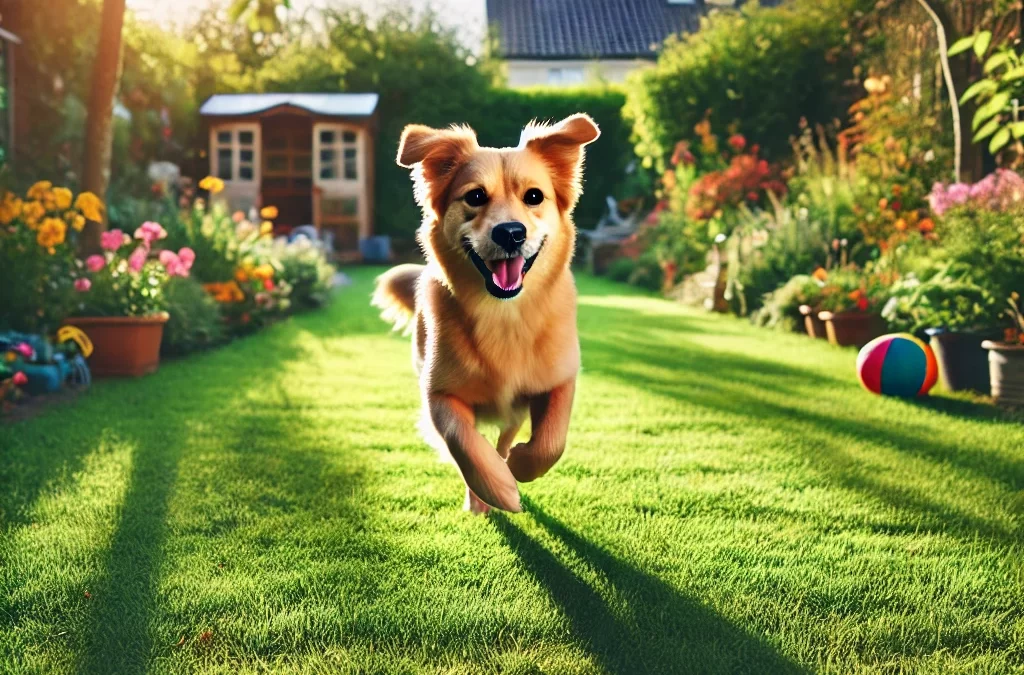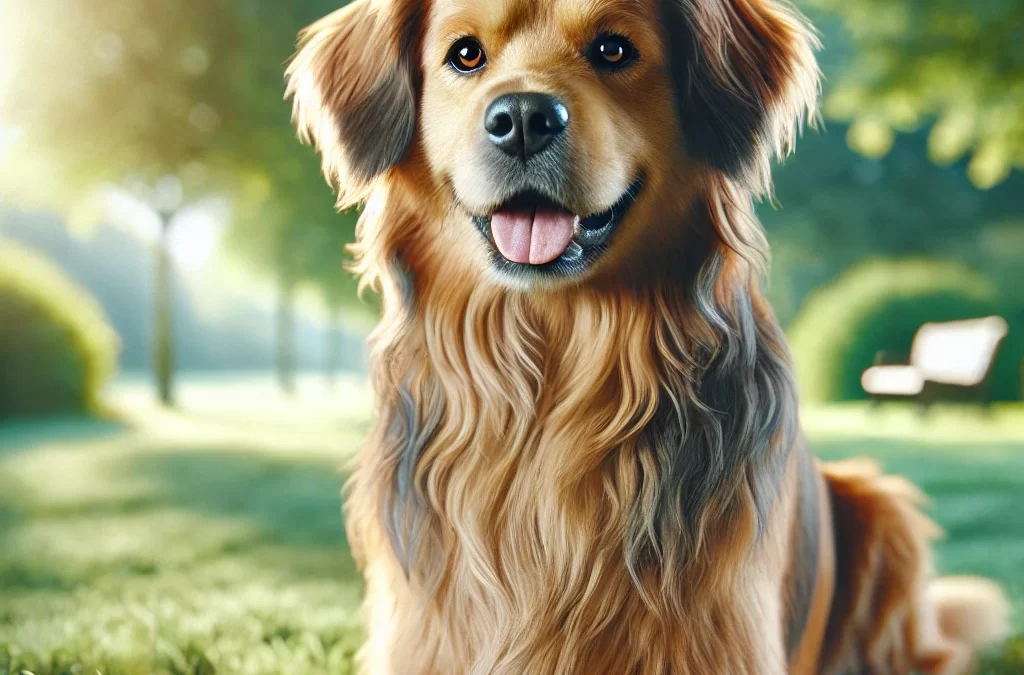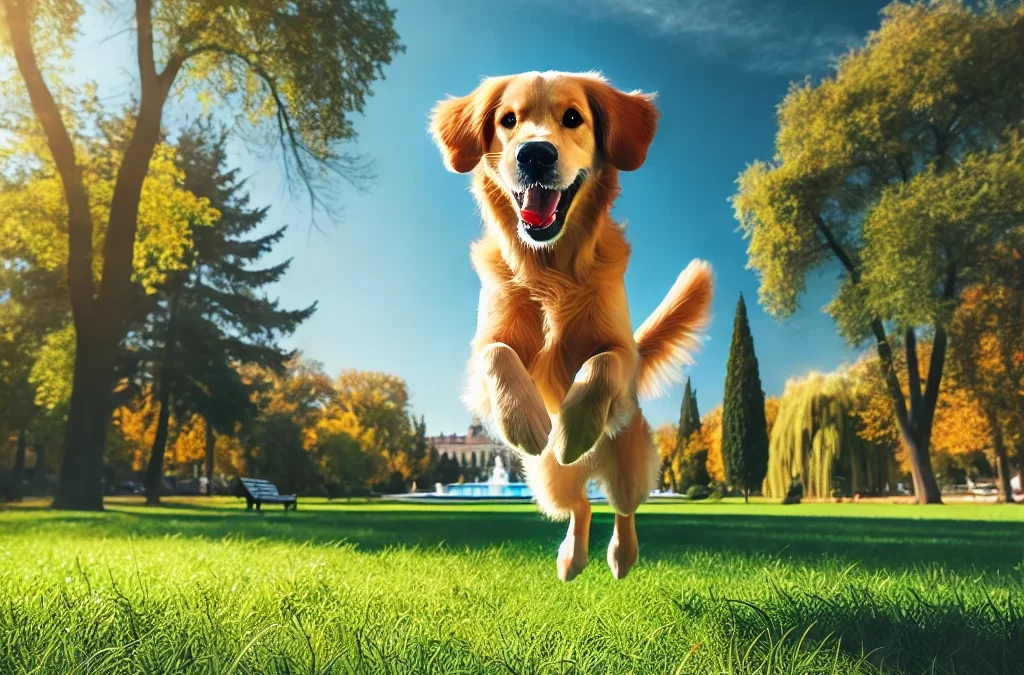
執筆者 TCMVET | 2024年12月26日 | 犬の癌と腫瘍
脾臓リンパ腫は、体の免疫システムに不可欠な器官である脾臓に影響を及ぼす、まれで困難な病気です。リンパ腫は一般にホジキンリンパ腫と非ホジキンリンパ腫に分類されますが、脾臓リンパ腫は通常後者に分類されます。この病気は、脾臓内で異常なリンパ球(白血球の一種)が制御不能に増殖するのが特徴です。この記事では、脾臓リンパ腫の病態生理学、症状、診断方法、および治療オプションについて詳しく説明します。
脾臓リンパ腫とは何ですか?
脾臓リンパ腫は非ホジキンリンパ腫 (NHL) の一種で、主に脾臓に影響を及ぼしますが、他のリンパ組織に転移することもあります。NHL は、リンパ節、脾臓、骨髄、その他の臓器などのリンパ組織で発生する血液がんの多様なグループです。脾臓リンパ腫は、脾臓が主な病変として現れることが多く、局所的または広範囲に周囲組織に転移するという点で独特です。
脾臓リンパ腫の種類
「脾臓リンパ腫」という用語は一般的に脾臓に発生するあらゆるリンパ腫を指しますが、関与するリンパ腫細胞の種類に基づいてさらに分類することができます。これには以下のものが含まれます。
- 脾臓辺縁帯リンパ腫(SMZL):
脾臓リンパ腫の最も一般的なサブタイプである SMZL は、通常、脾臓の辺縁帯から発生します。このタイプのリンパ腫は、進行が遅く、臨床経過が比較的緩慢であることが特徴です。
- びまん性大細胞型B細胞リンパ腫(DLBCL):
より攻撃的な形態のリンパ腫で、より広範囲の病気の過程の一部として脾臓が侵される可能性があります。DLBCL は、急速に増殖して広がる可能性がある B 細胞リンパ腫のサブタイプです。
- 有毛細胞白血病(HCL):
厳密にはリンパ腫に分類されていませんが、HCL は脾臓に影響を及ぼすことが多く、脾腫 (脾臓の肥大) など、脾臓リンパ腫と多くの特徴を共有しています。
- 脾臓T細胞リンパ腫:
このまれなサブタイプは T 細胞に由来し、より攻撃的で治療が難しい傾向があります。
脾臓リンパ腫の症状
脾臓リンパ腫の症状は、病気の進行度や他の臓器への転移の有無によって大きく異なります。一般的な症状は次のとおりです。
- 脾腫: 脾臓リンパ腫の最も顕著な特徴は脾臓の肥大です。これにより、腹部の不快感、痛み、または膨満感が生じることがあります。
- 疲労と衰弱: 多くの癌と同様に、疲労は一般的な症状です。免疫システムが癌細胞と闘うにつれて、体のエネルギーレベルが枯渇する可能性があります。
- Weight Loss: リンパ腫の場合、特に病気が進行するにつれて、原因不明の体重減少がよく見られます。
- 発熱と寝汗: これらはリンパ腫に伴う全身症状であり、病気のより進行した段階を示唆します。
- 貧血または血球数の低下: 脾臓リンパ腫は骨髄に影響を及ぼすため、貧血を引き起こし、顔面蒼白、めまい、息切れなどの症状を引き起こす可能性があります。
- 腹部不快感: 脾臓が肥大すると、左上腹部に膨満感、膨張感、不快感が生じ、下部の肋骨に痛みが生じることもあります。
脾臓リンパ腫の診断
脾臓リンパ腫の診断は、症状が多様で他の病気と似ている可能性があるため、難しい場合があります。脾臓リンパ腫の存在を確認するために、いくつかの診断ツールと手順が使用されます。
- 身体検査:
医師は定期検査中に脾腫に気づくことがあります。腹部の触診は、多くの場合、この病気を診断する最初のステップとなります。
- 血液検査:
全血球数(CBC)と肝機能検査では、貧血、血小板数の減少、白血球数の上昇などの異常が明らかになることがあります。これらはリンパ腫を示唆する可能性があります。乳酸脱水素酵素(LDH)などの特定のマーカーも上昇する可能性があります。
- Imaging Studies:
超音波、CT スキャン、MRI などの画像診断技術は、脾臓の大きさを視覚化し、他の臓器への影響やリンパ節腫脹 (リンパ節の腫れ) を検出するのに役立ちます。
- 生検:
脾臓リンパ腫の確定診断には、脾臓またはその他の罹患組織の生検が必要です。骨髄への関与が疑われる場合は、骨髄生検が行われる場合もあります。
- フローサイトメトリーと免疫組織化学:
これらの技術は、関与するリンパ球の特定の種類を分析し、リンパ腫の細胞マーカーを識別するために使用され、正確なサブタイプを決定するのに役立ちます。
脾臓リンパ腫の治療法
脾臓リンパ腫の治療は、リンパ腫のサブタイプ、病気の進行度、患者の年齢、全体的な健康状態など、いくつかの要因によって異なります。一般的な治療アプローチは次のとおりです。
- 化学療法:
脾臓リンパ腫の主な治療は化学療法であり、全身のリンパ腫細胞を殺すことを目的としています。治療法には、リンパ腫と体の他の部位に転移している可能性のある細胞の両方を標的とする併用化学療法(例:CHOP または CVP)が含まれる場合があります。
- 放射線療法:
局所的な病気の場合、脾臓やその他の患部を標的とした放射線療法が行われることがあります。ただし、放射線療法は通常、化学療法だけでは不十分な場合にのみ行われます。
- 免疫療法:
モノクローナル抗体(リツキシマブなど)などの免疫療法は、リンパ腫細胞上の特定のタンパク質を標的とし、免疫系のがんに対する抵抗力を高めます。
- 脾臓摘出術:
脾臓の外科的除去(脾臓摘出術)は、特に脾臓が激しい痛みやその他の合併症を引き起こしている場合に、場合によっては検討されることがあります。ただし、脾臓摘出術はリンパ腫の根治的治療ではなく、通常は他の治療法と組み合わせて使用されます。
- Targeted Therapy:
標的療法の最近の進歩により、より正確な治療オプションが提供されています。リンパ腫細胞の遺伝子変異または細胞経路を特に標的とする薬剤が、脾臓リンパ腫の治療に研究されています。
- 幹細胞または骨髄移植:
進行性または難治性の脾臓リンパ腫の患者の場合、幹細胞移植が選択肢となる場合があります。この治療は、積極的な化学療法の後に、損傷した骨髄を健康な幹細胞に置き換えることを目的としています。
予後と展望
脾臓リンパ腫の患者の予後は、病気の種類と進行度によって大きく異なります。一般的に、脾臓リンパ腫は他の種類のリンパ腫に比べて予後が良好である傾向があり、特に脾臓辺縁帯リンパ腫 (SMZL) のような緩徐進行性のサブタイプの場合にはその傾向が顕著です。しかし、びまん性大細胞型 B 細胞リンパ腫 (DLBCL) のようなより悪性度の高いタイプでは集中治療が必要になる場合があり、予後はそれほど良好ではない可能性があります。
早期診断とカスタマイズされた治療計画により、生存率が大幅に向上します。標的療法と免疫療法の進歩により、脾臓リンパ腫の患者は病気を管理し、充実した生活を送る可能性が高くなりました。
結論
脾臓リンパ腫はまれではありますが、転帰を改善するにはタイムリーな診断と適切な治療を必要とする重大な疾患です。研究が進むにつれて、新しい治療法とより正確な診断方法によって、この疾患の管理が向上しています。脾臓リンパ腫の症状、治療の選択肢、潜在的な課題を理解することは、患者と医療従事者の両方にとって、脾臓リンパ腫の複雑さを乗り越え、患者の生活の質を向上させるために不可欠です。

執筆者 TCMVET | 2024年12月26日 | 犬の癌と腫瘍
犬の脾臓は、血液の濾過、赤血球の貯蔵、免疫システムの維持に重要な役割を果たす重要な臓器です。心臓や肝臓などの他の臓器ほど話題になることはありませんが、脾臓はさまざまな健康状態の影響を受けやすく、最も懸念されるものの 1 つが腫瘍です。犬の脾臓腫瘍は良性から悪性までさまざまで、動物の健康と生存にさまざまな影響を及ぼす可能性があります。
この記事は、犬の脾臓腫瘍の原因、症状、診断、治療の選択肢、生存率など、犬の脾臓腫瘍について深く理解することを目的としています。これらの要因を詳細に検討することで、ペットの飼い主が犬の健康とケアについて十分な情報に基づいた決定を下すための貴重な情報を提供したいと考えています。
脾臓とその機能を理解する
脾臓腫瘍の詳細に入る前に、まず犬の体内での脾臓の役割を理解することが重要です。脾臓は腹部の左上側に位置し、いくつかの機能を果たします。
- 血液濾過脾臓は、古くなった赤血球や損傷した赤血球を血流から濾過して除去します。
- 血液細胞の保存: 赤血球の貯蔵庫として機能し、運動時やストレス時など需要が増大したときに赤血球が血流に放出されます。
- 免疫機能脾臓には感染症と戦い、犬の免疫システムをサポートする白血球が含まれています。
これらの重要な機能を考えると、脾臓に影響を及ぼすあらゆる問題は犬の全体的な健康に重大な影響を及ぼす可能性があります。
犬の脾臓腫瘍の種類
犬の脾臓腫瘍は、良性と悪性の 2 つのカテゴリに大まかに分類できます。これら 2 つのタイプの違いを理解することは、予後と治療方法を決定する上で非常に重要です。
- 良性腫瘍
- 血管腫これらは血管でできた腫瘍で、良性であると考えられています。血管腫は小さい場合が多く、脾臓の機能を妨げるほど大きくならない限り、目立った症状を引き起こさない場合があります。
- 良性結節性過形成これは脾臓組織の非癌性腫瘍で、通常は高齢の犬に見られます。無症状の場合が多く、問題にならない限り治療の必要がない場合があります。
- 悪性腫瘍
- 血管肉腫これは犬の脾臓の悪性腫瘍の中で最も一般的なもので、その攻撃的な性質で知られています。血管肉腫は血管細胞から発生し、肝臓、肺、心臓などの他の臓器に急速に広がる可能性があります。
- リンパ腫このタイプの癌はリンパ系で発生し、脾臓に影響を及ぼして脾臓リンパ腫と呼ばれる状態を引き起こすことがあります。リンパ腫は一般的に全身性疾患を伴い、体の他の部分にも影響を及ぼす可能性があります。
- 白血病まれではありますが、白血病が脾臓に影響を及ぼすことがあり、白血球の異常な増加を引き起こし、脾腫(脾臓の肥大)やその他の症状を引き起こす可能性があります。
悪性脾臓腫瘍、特に血管肉腫と診断された犬の予後は、病気の進行が速いため不良になる傾向があります。
犬の脾臓腫瘍の症状
脾臓腫瘍の症状は漠然としていて、他の腹部疾患の症状と似ている場合があります。脾臓腫瘍のある犬の中には、明らかな病気の兆候を示さない犬もいますが、腫瘍が成長したり破裂したりすると、重篤な症状を経験する犬もいます。
一般的な症状は次のとおりです。
- 腹部の膨張または腫れ: 腫瘍が大きく成長して脾臓が肥大した場合に発生することがあります。
- 無気力または衰弱脾臓腫瘍のある犬は疲れやすくなり、普段の活動に対するエネルギーや興味が欠如することがあります。
- ペールガム腫瘍が内出血を引き起こすと、犬の歯茎が青白くなり、貧血の兆候が現れることがあります。
- 倒れたり突然死したり: これは、腫瘍が破裂して内出血を引き起こす場合に発生することがあります。特に血管肉腫は突然の内出血を引き起こすことで知られており、すぐに治療しないと致命的となる可能性があります。
- 食欲不振と体重減少: 脾臓腫瘍のある犬は食事を拒否し、原因不明の体重減少を経験する場合があります。
- 嘔吐または下痢腹部腫瘍のある犬では消化障害もよく見られます。
犬がこれらの症状のいずれかを示した場合、脾臓腫瘍の存在を除外または確認するために、できるだけ早く獣医の診察を受けることが重要です。
犬の脾臓腫瘍の診断
脾臓腫瘍の診断には通常、身体検査、画像検査、場合によっては生検の組み合わせが含まれます。手順は通常、次のとおりです。
- 身体検査獣医師は犬の腹部を触診して、脾臓の肥大や腹部の圧痛の兆候がないか確認します。
- Blood Tests: 血液検査では、貧血の兆候や血小板数の減少などの異常が見られ、内出血を示唆する場合があります。
- 画像検査: X 線、超音波、または CT スキャンを使用して、脾臓やその他の腹部臓器を視覚化します。特に超音波は、腫瘍の大きさ、形状、位置を特定するのに役立ちます。
- 穿刺吸引法(FNA): 穿刺吸引法では、脾臓から少量の組織サンプルを採取し、癌細胞の有無を調べます。超音波検査で腫瘍が確認できる場合によく行われます。
- 外科的探索: 場合によっては、特に他の診断検査で決定的な結果が得られない場合、生検のために脾臓またはその一部を摘出する手術が行われることがあります。
犬に最も多くみられる悪性脾臓腫瘍である血管肉腫は、内出血や他の臓器への転移など、すでに重大な損傷を引き起こした後に診断されることが多いです。
犬の脾臓腫瘍の治療オプション
犬の脾臓腫瘍の治療は、腫瘍の種類、進行度、転移の有無によって大きく異なります。主な治療の選択肢には、手術、化学療法、支持療法などがあります。
- 外科的除去(脾臓摘出): 腫瘍が脾臓に限局しており、他の臓器に転移していない場合、脾臓を除去する手術 (脾臓摘出術) が通常、第一選択の治療法です。脾臓摘出術は犬にとって一般的に忍容性が高く、他の臓器 (肝臓など) がその機能を引き継ぐため、犬は脾臓がなくても生きることができます。
- 手術後の予後良性腫瘍の場合、または悪性腫瘍が早期に発見された場合、手術後の予後は良好です。しかし、血管肉腫のような腫瘍の場合、脾臓を摘出した後でも予後は不良です。
- 化学療法: 血管肉腫のような悪性腫瘍が他の臓器に転移している場合や、リスクが高いと考えられる場合は、病気の管理を助けるために手術後に化学療法が推奨されることがあります。化学療法は生存期間を延ばすことができますが、治癒しないことがほとんどです。
- 化学療法プロトコル: 血管肉腫に使用される一般的な化学療法薬には、ドキソルビシン、シクロホスファミド、ビンクリスチンなどがあります。治療計画は個々の犬の状態に応じて異なる場合があります。
- 支持療法: 脾臓腫瘍と診断された犬は、症状を管理し生活の質を向上させるために支持療法が必要になる場合があります。これには以下が含まれます:
- 貧血や失血に対する輸血
- 痛みの管理、特に内出血や不快感がある場合
- 犬が適切に食事を摂っていない場合の栄養補給
手術や化学療法が選択できない場合は、緩和ケアによって犬の快適さを改善できる可能性があります。
生存率と予後
脾臓腫瘍を患った犬の予後は、腫瘍の種類、進行度、治療の成功など、いくつかの要因によって大きく異なります。
- 良性腫瘍: 血管腫や良性結節性過形成などの良性の脾臓腫瘍を患っている犬の場合、特に腫瘍が早期に発見され、外科的に切除された場合、予後は一般的に良好です。これらの犬は、手術後、通常の健康な生活を送ることができます。
- 悪性腫瘍:
- 血管肉腫この悪性腫瘍は予後が悪いことで有名です。血管肉腫にかかった犬の生存率は、脾臓摘出手術を行った場合でも、化学療法を行わない場合、通常 3 ~ 6 か月しかありません。化学療法を行うと、生存期間を 6 ~ 12 か月まで延長できますが、再発することがよくあります。
- リンパ腫と白血病: 脾臓リンパ腫と白血病の予後は、病気の種類と進行度、および犬の治療に対する反応によって異なります。化学療法は病気の抑制に役立ちますが、これらの病気は効果的に管理されなければ致命的になることもあります。
結論
犬の脾臓腫瘍は、特に悪性の場合、重大な健康問題となります。予後は腫瘍の種類と診断時の段階によって大きく異なります。良性腫瘍は外科的切除で比較的良好な結果が得られますが、血管肉腫などの悪性腫瘍は予後が悪いことが多く、治療は延命と症状の管理に重点が置かれます。
ペットの飼い主にとって、早期発見は重要です。愛犬の病気の兆候や異常な行動に気づいたら、すぐに獣医に相談することが大切です。適切な診断と治療により、脾臓腫瘍を患う犬の多くは充実した生活を送ることができ、場合によっては生存率が大幅に向上します。
脾臓腫瘍の症状、治療の選択肢、生存率を理解することは、責任あるペットの飼い主として、また愛犬に可能な限り最善のケアを提供するために不可欠です。

執筆者 TCMVET | 2024年12月25日 | 犬の癌と腫瘍
骨肉腫 (OSA) は、犬に最も悪性で一般的な骨がんの一種で、特定の犬種ではこの病気になりやすい傾向があります。これらの犬種の中でも、ロットワイラーは他の犬種に比べてかなり若い年齢で骨肉腫を発症するリスクが高いことで際立っています。この記事では、ロットワイラーの骨肉腫の原因となる独自の要因、診断の課題、予後を改善するために登場した革新的な治療法について詳しく説明します。
ロットワイラーの骨肉腫について
骨肉腫は骨細胞から発生する悪性腫瘍で、急速に成長し、特に肺など体の他の部位に転移しやすいことで知られています。ロットワイラーは体の大きさと遺伝的素因から、この致命的な病気を発症する可能性が高く、特に四肢に発症します。骨肉腫はどの犬にも発生する可能性がありますが、ロットワイラーは他の多くの犬種よりも発生しやすく、大型犬では発症率が高いことが研究で示されています。
この腫瘍は通常、大腿骨、上腕骨、脛骨などの長骨に影響を及ぼし、影響を受けた手足の跛行、腫れ、または痛みとして最初に気付くことが多い。骨肉腫は思春期によく見られる人間とは異なり、犬では成人期、多くの場合 7 歳から 10 歳の間に発症するのが一般的である。
遺伝的つながり:なぜロットワイラーなのか?
ロットワイラーは遺伝的要因と環境的要因の組み合わせにより、遺伝的に骨肉腫になりやすい傾向があります。最近の研究では、特定の遺伝子変異と成長因子の発現が他の犬種よりもロットワイラーで多く見られることが示唆されています。この犬種は発育段階で急速に成長するため、骨に余分なストレスがかかり、骨細胞変異による骨肉腫のリスクが高まる可能性があります。外傷、感染、ホルモンの影響などの他の要因が寄与している可能性もありますが、遺伝が中心的な役割を果たしています。
興味深いことに、ロットワイラーはリンパ腫や血管肉腫など他の種類の癌にもかかりやすいことから、特定の遺伝的要因がさまざまな悪性腫瘍にかかりやすくしている可能性があり、治療方法がさらに複雑になっていることが示唆されています。
診断上の課題
ロットワイラーの骨肉腫の診断には、いくつかの課題があります。骨病変の特定にはレントゲン写真(X 線)がよく使用されますが、骨肉腫と、骨髄炎や良性骨腫瘍などのそれほど悪性ではない他の病状との区別は難しい場合があります。骨肉腫が疑われると、腫瘍の範囲と広がりを評価するために、CT スキャンや MRI などの追加の画像診断技術が必要になることがよくあります。
確定診断には通常、侵襲的となる可能性のある生検が必要です。骨肉腫の悪性度を考えると、生存率を向上させるには、タイムリーな診断と介入が重要です。
治療の選択肢: 進化する状況
ロットワイラーの骨肉腫は、一度診断されると、治療の選択肢が限られることが多く、がんの進行度に大きく左右されます。従来の治療法は、手術と化学療法の組み合わせに重点を置いてきました。
- 外科的切断: 患肢の切断は、特に腫瘍が四肢にある場合、最も一般的な治療法の 1 つです。この思い切った処置は生存期間と生活の質を改善できますが、治癒ではありません。骨肉腫を患う犬は、手術後数か月以内に、特に肺に転移を起こすことがよくあります。
- 化学療法: 微小転移に対処するために、手術後に化学療法が一般的に使用されます。カルボプラチンやドキソルビシンなどの薬剤は生存期間を延長することが示されていますが、腫瘍が広がる傾向があるため、全体的な予後は依然として不良です。
しかし、より良い結果をもたらす可能性のある新しいアプローチが登場しています。
革新的な治療法と将来の方向性
近年、ロットワイラーの骨肉腫の治療は獣医腫瘍学の進歩により進化しています。有望な治療法としては次のようなものがあります。
- 免疫療法研究者たちは、人間の癌治療に効果を上げている免疫チェックポイント阻害剤を、骨肉腫を患う犬に使用することを検討している。免疫療法は、犬の免疫系を刺激して、癌細胞をより効果的に認識し破壊することを目的としている。
- 標的療法骨肉腫の成長と拡散に関与する特定の分子経路を標的とした新しい薬物療法が有望視されています。これらの経路を阻害することで、これらの治療法は腫瘍の成長を遅らせ、転移を減らす可能性があります。
- 遺伝子治療まだ初期段階ではありますが、遺伝子治療は将来、骨肉腫の治療に役立つ可能性があります。犬の遺伝子構造を変更して免疫反応を強化したり、損傷した細胞を修復したりすることで、遺伝子治療はより個別化された効果的なアプローチを提供できるようになります。
- 再生医療: 幹細胞療法と多血小板血漿 (PRP) 治療は、従来の癌治療の補助として試験されています。これらの治療法は、手術後の回復を助け、化学療法に伴う副作用の重症度を軽減する可能性があります。
- 早期検出技術血液や尿中の癌関連バイオマーカーを検出する液体生検技術の進歩により、犬の骨肉腫の早期発見に希望がもたれています。これにより、より早い介入と治療結果の改善につながる可能性があります。
精神的負担:骨肉腫を患ったロットワイラーの世話
臨床的な課題以外にも、骨肉腫と診断されたロットワイラーの飼い主は感情的なハードルに直面します。この犬は忠誠心、知性、保護本能で知られており、その病気はさらに悲痛なものです。獣医師との効果的なコミュニケーション、病気の進行の理解、治療オプションについての十分な情報に基づく決定は、ペットと飼い主の両方にとって重要です。緩和ケアと痛みの管理は、犬の残された時間をできるだけ快適で充実したものにするために重要な役割を果たします。
結論
ロットワイラーの骨肉腫は、最良の状況下でも予後が不良であり、獣医とペットの飼い主の両方にとって大きな課題となっています。しかし、診断と治療の選択肢の進歩により、状況は徐々に変化し、治療結果の改善への希望が生まれています。遺伝的要因、革新的な治療法、最先端の医療介入を継続的に研究することで、この壊滅的な病気をより適切に管理し、最終的には罹患したロットワイラーの生活の質を向上させる可能性があります。
獣医学が進歩するにつれ、骨肉腫と闘う愛すべきロットワイラーへの希望も高まっています。道のりは困難に満ちているかもしれませんが、新しい治療法の追求は変化を促し続け、この強靭な犬たちに明るい未来をもたらしています。

執筆者 TCMVET | 2024年12月25日 | 犬の癌と腫瘍
脾臓間質肉腫は、犬の脾臓を主に侵す、まれではあるが悪性の悪性腫瘍です。侵襲性と再発率の高さが特徴のこのタイプの癌は、犬の健康に重大な脅威をもたらします。獣医学の進歩により、脾臓間質肉腫の研究が深まり、新たな知見と潜在的な治療方法がもたらされています。この記事では、この疾患の多面的な側面を詳しく調べ、臨床結果を向上させる革新的な診断および治療方法を提案します。
脾臓間質肉腫の病理学的特徴
脾臓間質肉腫は、脾臓内の間質(結合)組織から発生します。これらの腫瘍は、高い異質性と侵襲性を示します。病理学的には、腫瘍細胞は不規則な形状、活発な有糸分裂像を示すことが多く、血管新生(新しい血管の形成)を伴うことがよくあります。この生物学的行動は、腫瘍が急速に周囲の組織に浸潤して転移する可能性があるため、早期診断と効果的な治療を困難にします。
臨床症状と診断上の課題
脾臓間質肉腫を患う犬は、腹部の腫れ、食欲不振、体重減少、貧血など、さまざまな臨床症状を呈します。これらの症状は非特異的であり、血管肉腫や脾臓血腫などの他の脾臓疾患と重複するため、正確な診断が困難です。現在の診断方法には以下のものがあります。
- 超音波検査: 脾臓腫瘤の可視化に利用されますが、異なる腫瘍タイプを区別する能力には限界があります。
- コンピュータ断層撮影(CT)スキャン: 詳細な画像を提供しますが、アクセス性が低く、高価です。
- 穿刺吸引細胞診: 侵襲性は最小限ですが、確定診断に十分な組織が得られない可能性があります。
これらの制限は、より信頼性が高く、早期に診断できるツールの必要性を強調しています。
革新的な診断方法
- 液体生検技術非侵襲性の診断ツールとして登場した液体生検では、血液中の循環腫瘍 DNA (ctDNA) またはエクソソームを検出します。この方法は、腫瘍の進行の早期スクリーニングと動的モニタリングを可能にし、従来の生検技術に代わる有望な方法となります。
- 分子バイオマーカー研究脾臓間質肉腫に特有の特定の分子マーカーを特定することで、診断精度を高めることができます。ゲノミクスとプロテオミクスの進歩により、この悪性腫瘍の診断における感度と特異性を向上させる可能性のある新しいバイオマーカーの発見への道が開かれています。
- 高度な画像技術造影超音波や分子イメージングなどの革新技術により、腫瘍の特性に関するより詳細な洞察が得られ、他の脾臓疾患との区別に役立ちます。
革新的な治療戦略
- 標的療法: 外科的切除や化学療法などの従来の治療法は、脾臓間質肉腫に対して効果が限られることがよくあります。腫瘍の成長に関与する特定の分子経路に焦点を当てた標的療法は、より効果的なアプローチを提供します。たとえば、血小板由来成長因子受容体 (PDGFR) を標的とする阻害剤は、腫瘍細胞に対して選択的な細胞毒性を示しており、有望な治療オプションとなっています。
- 免疫療法免疫療法は、人間の腫瘍学の進歩を借用し、犬の免疫システムを利用して癌細胞を認識して攻撃することを目指しています。人間の癌治療に革命をもたらした免疫チェックポイント阻害剤は、犬の脾臓間質肉腫の治療における潜在的な有効性が研究されています。
- ナノテクノロジーの応用ナノ粒子ベースの薬物送達システムの開発により、治療薬を腫瘍部位に直接正確に送達することが可能になりました。これにより、全身の副作用が最小限に抑えられ、標的部位での薬物の濃度が確実に高まるため、治療の有効性が向上します。
- 併用療法標的療法と免疫療法または化学療法を組み合わせるなど、複数の治療法を統合すると、全体的な治療効果が向上し、腫瘍の再発の可能性が低下する可能性があります。
予防と早期発見の見通し
- 遺伝子検査とリスク評価: 脾臓間質肉腫の遺伝的素因を特定することで、早期発見と予防戦略に役立ちます。繁殖プログラムと遺伝カウンセリングは、感受性のある犬の集団におけるこの病気の発生率を減らすのに役立つ可能性があります。
- 定期的な健康モニタリング: リスクのある犬種や高齢犬に対して定期的なスクリーニング プロトコルを実施することで、早期発見が可能になります。定期的な血液検査と画像検査は、進行段階に達する前に腫瘍を特定するのに役立ちます。
- 国民の意識と教育獣医師と犬の飼い主に脾臓間質肉腫に関連する兆候とリスクについて教育することで、より早い段階での獣医の診察とタイムリーな介入が可能になります。
結論
犬の脾臓間質肉腫は、その悪性度と診断の複雑さから、非常に困難な課題となっています。しかし、診断技術の進歩と革新的な治療戦略により、臨床結果の改善が期待されています。分子診断と液体生検による早期発見を重視し、標的療法と免疫療法のアプローチを採用することで、このまれな犬の癌の管理に革命を起こすことができます。獣医腫瘍学における継続的な研究と協力は、より効果的な解決策を発見し、最終的に罹患犬の生活の質を向上させるために不可欠です。
今後の方向性
今後の研究は以下に重点を置くべきである。
- 包括的ゲノム研究脾臓間質肉腫の分子基盤をより深く理解し、より正確な標的治療法の開発を可能にします。
- 臨床試験免疫療法やナノテクノロジーに基づくアプローチを含む新しい治療法の有効性と安全性を評価するための堅牢な臨床試験を実施します。
- 学際的アプローチ獣医病理学、分子生物学、薬理学の知見を統合して総合的な治療プロトコルを作成します。
これらの革新的な戦略を採用することで、獣医コミュニティは脾臓間質肉腫との闘いにおいて大きな進歩を遂げることができ、罹患した犬の予後と生存率の改善に希望を与えることができます。

執筆者 TCMVET | 2024年12月23日 | 犬の癌と腫瘍
愛犬や愛猫が癌と診断されると、まるで世界が止まったように感じるかもしれません。診断はしばしば衝撃的なものであり、その後の道のりは疑問、感情、そして難しい決断でいっぱいです。ペットの親として、圧倒的な疑問は次のようになります。 私のペットは癌を生き延びることができますか?
ペットの飼い主は誰もこのような診断を受けたくありませんが、治療の選択肢や生存率の面で今後何が起こるかを理解しておくと、より明確で希望を持って治療の道を進むことができます。ペットの腫瘍治療の過程について知っておくべきことは次のとおりです。
1. 最初のステップ: 診断
旅は獣医の診察から始まります。獣医は腫瘍や異常な成長の兆候に気づくかもしれません。癌が疑われる場合、獣医は血液検査、超音波検査、X 線検査、さらには生検などの診断検査を勧めます。早期発見は治療結果に大きく影響するため、非常に重要です。
重要な洞察早期診断により、より効果的な治療が可能になり、ペットの寿命を大幅に延ばすことができます。
2. 腫瘍の種類: ペットのがんを理解する
すべての腫瘍が同じというわけではありません。犬や猫では、癌は次のようなさまざまな形で現れます。
- 良性腫瘍: 転移しない可能性があるが、監視が必要な非癌性腫瘍。
- 悪性腫瘍他の組織や臓器に侵入する可能性のある癌性腫瘍。
- 転移性癌がん細胞が原発部位から体の他の部位に転移した場合。
獣医師は腫瘍の種類と進行段階を概説した診断を行い、最善の治療方針を決定するのに役立ちます。
3. 治療の選択肢: 個別対応アプローチ
診断が下されると、獣医師は治療の選択肢について話し合います。選択肢には手術、化学療法、放射線療法、またはこれらの組み合わせが含まれます。それぞれの治療計画は、がんの種類、進行度、ペットの全体的な健康状態に合わせて調整されます。
- 手術局所癌の場合、腫瘍の切除が最初かつ最も効果的な治療法となることがよくあります。
- 化学療法ペットにとってはつらいことですが、手術で除去できない癌細胞を標的とするために化学療法が必要になる場合があります。
- 放射線治療: 放射線療法は手術や化学療法と併用されることが多く、腫瘍を縮小させたり、腫瘍のさらなる成長を防いだりするのに役立ちます。
重要な洞察すべてのペットがあらゆる治療を必要とするわけではありません。獣医師があなたと協力して、ペットの状態に最も適した治療計画を見つけます。
4. 回復への道:副作用の管理
がん治療はペットの身体に負担をかけることがあります。たとえば、化学療法や放射線治療は吐き気、食欲不振、疲労感を引き起こすことがあります。しかし、ほとんどのペットは予想以上に治療によく耐え、回復も早いものが多くあります。定期的に獣医の診察を受けることで、副作用を効果的に管理できます。
重要な洞察: ペットの回復過程を注意深く監視し、感情的なサポートを提供することは、治癒の過程において非常に重要な部分です。
5. 生活の質:最も重要な要素
ペットの飼い主にとって、最も難しい決断の 1 つは、治療と生活の質のバランスを取ることです。腫瘍によっては、特に進行期になると、効果的な治療が困難な場合があります。このような場合、目標は癌の治療から、痛みの管理とペットの快適さの向上に移ることがあります。
重要な洞察: ペットの健康を最優先し、必要に応じて獣医師と緩和ケアの選択肢について遠慮なく話し合ってください。
6. サポートシステム: あなたは一人ではありません
ペットと一緒に癌と向き合うのは孤独を感じるかもしれませんが、多くのサポート体制が整っています。獣医腫瘍医、サポートグループ、同様の経験をしたペットの飼い主は、治療プロセス全体を通して指導、安心感、リソースを提供することができます。
重要な洞察強力なサポート体制があれば、ペットのために強い気持ちを保つことができ、ペットが可能な限り最善のケアを受けられるようになります。
7. 旅の終わり:別れを告げる
残念ながら、あらゆる努力にもかかわらず、ペットの中には癌を生き延びられないペットもいます。その時が来たら、ペットに安らぎと尊厳を与えることが重要です。ホスピスケアと安楽死は、ペットの苦しみを防ぎ、安らかに逝くことができる選択肢です。
重要な洞察: 終末期の決断は決して簡単ではありませんが、ペットの最後の瞬間が愛と思いやりに満ちたものとなるようにするのに役立ちます。
結論:希望と愛の旅
あなたのペットはがんを克服できるでしょうか? 早期発見、腫瘍の種類、治療の選択肢、ペットの全体的な健康状態など、多くの要因によって左右されます。がんは恐ろしい診断ですが、多くの犬や猫は治療後も生き延び、元気に成長しています。治療の道のりは長く、困難かもしれませんが、適切なサポート、治療、ケアがあれば、あなたのペットは力強く回復力を持ってがんに立ち向かうことができます。
ペットの飼い主であるあなたは、ペットの最大の擁護者です。情報を入手し、獣医と緊密に協力し、前向きな姿勢を保つことで、診断結果にかかわらず、愛犬が充実した幸せな生活を送る最高のチャンスを与えることができます。

執筆者 TCMVET | 2024年12月23日 | 犬の癌と腫瘍
ペットの飼い主にとって、愛犬が深刻な健康問題に直面していると考えることほど心が痛むことはありません。最も一般的でありながら、誤解されがちな健康上の脅威の 1 つが腫瘍です。「腫瘍」という言葉を聞くとすぐにパニックになるかもしれませんが、腫瘍の種類や、腫瘍が愛犬の健康に及ぼす影響、そして最も重要なこととして、早期介入によって結果が大幅に改善されることを理解することが重要です。
腫瘍の現状: すべての腫瘍が同じというわけではない
犬の腫瘍について話すとき、すべての腫瘍が悪性(がん性)であるとは限らないことを認識する必要があります。腫瘍は良性(非がん性)または悪性(がん性)に分類され、それぞれの種類によって行動が異なり、犬の健康に影響を及ぼす可能性があります。
- 良性腫瘍: これらはゆっくりと成長する傾向があり、通常は体の他の部分に広がることはありません。ただし、放置すると不快感を引き起こしたり、近くの臓器に影響を及ぼす可能性があります。一般的な例としては、脂肪腫 (脂肪性腫瘍) や線維腫 (結合組織の腫瘍) などがあります。
- 悪性腫瘍これらはより攻撃的で、周囲の組織を侵したり、血流やリンパ系を通じて他の領域に広がったりすることがあります。犬によく見られる悪性腫瘍には、肥満細胞腫、骨肉腫(骨のがん)、血管肉腫(血管の腫瘍)などがあります。
良性腫瘍は外科的切除や監視下での管理で治療できることが多いですが、悪性腫瘍の場合は手術、化学療法、放射線療法などのより集中的な治療が必要になります。
症状:潜在的な腫瘍を早期に認識する方法
腫瘍は、特に初期段階では、必ずしも簡単に検出できるとは限りません。しかし、特定の兆候や症状が腫瘍の存在を示している場合があります。早期発見は治療の成功率を大幅に高めることができるため、以下の点に注意してください。
- Lumps and Bumps: 皮膚の下に目立つしこりが現れるのは、触ると痛みを感じる場合と感じない場合があります。これは最も一般的な兆候の 1 つです。しこりが急速に大きくなったり、硬くなったり、赤みや熱を伴ったりする場合は、検査を受ける価値があります。
- 行動の変化: 腫瘍、特に悪性の腫瘍は、不快感、痛み、疲労を引き起こす可能性があります。犬が異常に無気力になったり、食事を拒んだり、動くときに不快感を示す場合は、腫瘍が神経や臓器を圧迫している可能性があります。
- 呼吸困難または咳: 犬が咳をし続けたり、呼吸が苦しくなったり、呼吸パターンが変化したりする場合は、肺や胸部に腫瘍がある可能性があります。
- 体重減少と食欲不振: がんの場合、体重減少や食欲不振が一般的な兆候です。これは、体が病気と闘うために余分なエネルギーを消費したり、腫瘍が消化器系を塞いだりするためです。
- 足の不調または腫れ突然手足を引きずったり腫れたりした場合は、骨肉腫または軟部組織の腫瘍が近くの関節を圧迫している可能性があります。
腫瘍が犬の健康全般に与える影響
腫瘍は、良性か悪性かにかかわらず、犬の健康全般に大きな影響を与える可能性があります。腫瘍の位置と種類によって、犬が直面する具体的な問題が決まります。
- 痛み: 腫瘍が内臓、筋肉、神経を圧迫すると、激しい痛みを引き起こすことがあります。悪性腫瘍は、特に骨や他の組織に転移すると、より悪性度が高く、痛みが強くなることがよくあります。
- Decreased Mobility骨や関節に腫瘍が発生すると、犬の自由な動きが制限され、活動レベルや全体的な生活の質が低下します。たとえば、四肢の骨肉腫は、犬が足を引きずったり、足が不自由になったりする一般的な原因です。
- 臓器機能障害: 肝臓、腎臓、肺などの重要な臓器に腫瘍が侵入すると、正常な臓器の機能が阻害される可能性があります。その結果、呼吸困難、嘔吐、尿や便の変化などの症状が現れることがあります。
- 免疫力の低下悪性腫瘍が大きくなると、犬の免疫系が弱まり、他の感染症や病気と闘うことが難しくなります。
治療の選択肢: 今後の道筋
腫瘍の治療は、腫瘍の種類、場所、進行度によって異なります。良性腫瘍の場合は、観察や簡単な外科的切除だけで済む場合が多いですが、悪性腫瘍の場合は、より包括的なアプローチが必要です。考えられる治療法の内訳は次のとおりです。
- 手術: 腫瘍、特に良性腫瘍に対する最も一般的な治療法は、外科的切除です。悪性腫瘍の場合、腫瘍を可能な限り切除するために手術が必要になることもあります。
- 化学療法: 悪性腫瘍によく使用される化学療法は、癌性腫瘍を縮小したり、成長を遅らせたりするのに役立ちます。化学療法には副作用(吐き気や脱毛など)がある場合もありますが、犬の寿命を延ばし、生活の質を向上させる可能性があります。
- 放射線治療放射線は通常、特に腫瘍を完全に除去できない場合に、手術や化学療法と併用して癌細胞を標的にして破壊するために使用されます。
- 緩和ケア進行した腫瘍や手術不能な腫瘍を患っている犬の場合、緩和ケアは痛みの管理と快適さの向上に重点を置いています。このような状況では、投薬、理学療法、食事の変更はすべて犬の健康に貢献できます。
ホリスティックアプローチ:伝統的な治療法を補完する
伝統的な医療処置はしばしば必要ですが、ペットの飼い主の中には、犬のケアを補うためにホリスティック療法に頼る人もいます。これには、鍼治療、ハーブサプリメント、免疫力を高めて治癒を促進するように設計された特別な食事療法などが含まれます。これらのオプションは従来の治療法と相互作用する可能性があるため、検討する前に必ず獣医師に相談してください。
予防とリスク軽減: 腫瘍が発生する前に止めることはできますか?
すべての腫瘍を予防できるわけではありませんが、特定の行動をとることで犬の特定の種類の癌のリスクを軽減できます。
- 獣医の定期検診: 定期的な健康診断により、獣医師は腫瘍の兆候を早期に発見できます。定期的な血液検査、X 線検査、超音波検査は、高齢の犬や癌になりやすい犬種には特に役立ちます。
- ヘルシー・ダイエット: 抗酸化物質、ビタミン、ミネラルが豊富なバランスの取れた食事は、犬の免疫システムと全体的な健康をサポートするのに役立ちます。肥満は特定の腫瘍のリスクを高める可能性があることを示唆する研究もあるため、健康的な体重を維持することが重要です。
- Spaying and Neutering: メスの犬の場合、避妊手術を行うと乳がんのリスクが大幅に軽減され、オスの犬の場合、去勢手術を行うと精巣がんの可能性が軽減されます。
- エクササイズ: 定期的な運動は犬の健康維持に役立ち、肥満関連腫瘍のリスクを減らし、良好な血行を促進して腫瘍形成の予防に役立ちます。
早期発見の力: ペットの飼い主なら誰もが知っておくべきこと
腫瘍が早期に発見されるほど、効果的な治療と回復の可能性が高まります。何かおかしいと感じたら、症状が悪化するまで待たないでください。定期的に犬のしこりや不快感の兆候をチェックし、何か異常に気付いたらすぐに獣医に相談してください。
常に注意を払い、情報を得ることで、愛犬の健康を最優先に考え、潜在的な腫瘍に迅速かつ効率的に対処することができます。結局のところ、愛犬は飼い主に頼って代弁者となり、飼い主には愛犬の健康の旅に変化をもたらす力があるのです。
結論: あなたはあなたの犬の最高の擁護者です
腫瘍に関しては、知識が力となります。ペットの飼い主として、情報を入手し、潜在的な健康問題を積極的に認識し、獣医師と緊密に連携して、愛犬に最善のケアを施すことが重要です。腫瘍が良性か悪性かにかかわらず、早期介入により結果が改善され、愛犬がより長く、より健康な生活を送ることができます。あなたの注意深さと愛情が大きな違いを生むのです。






